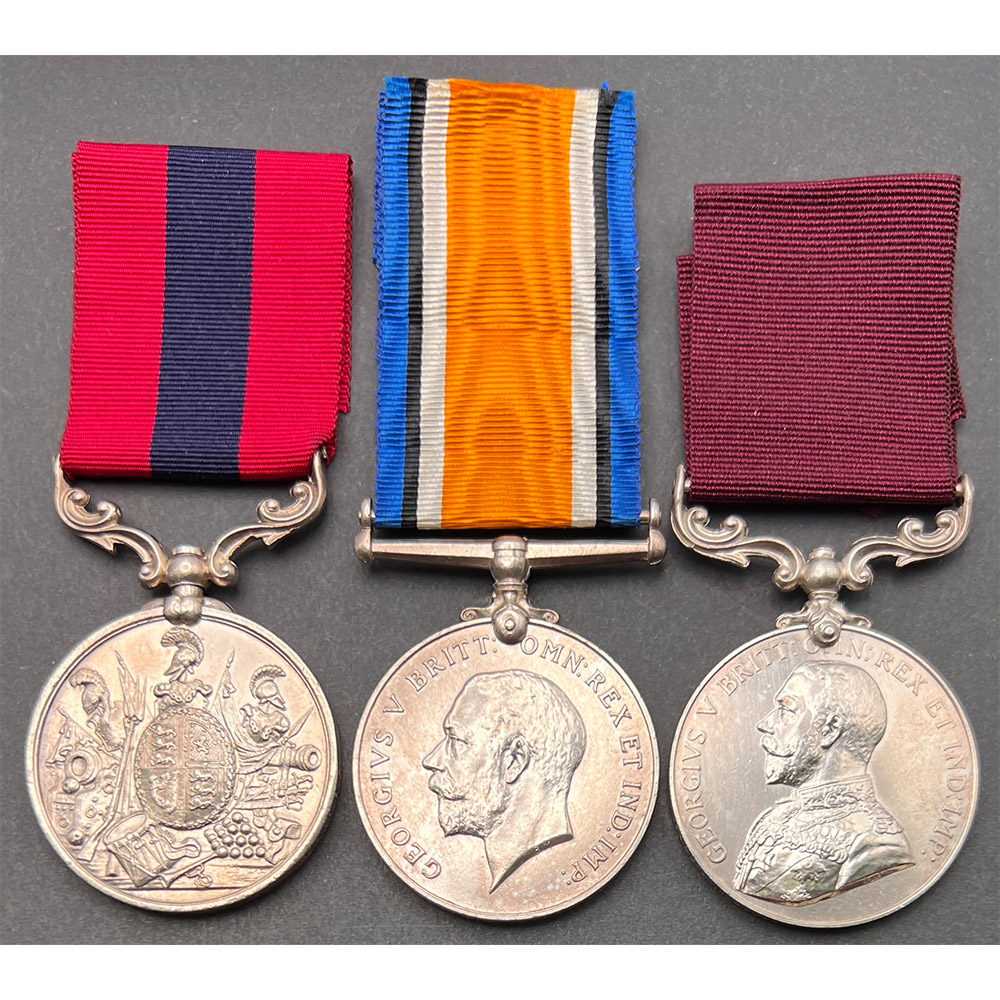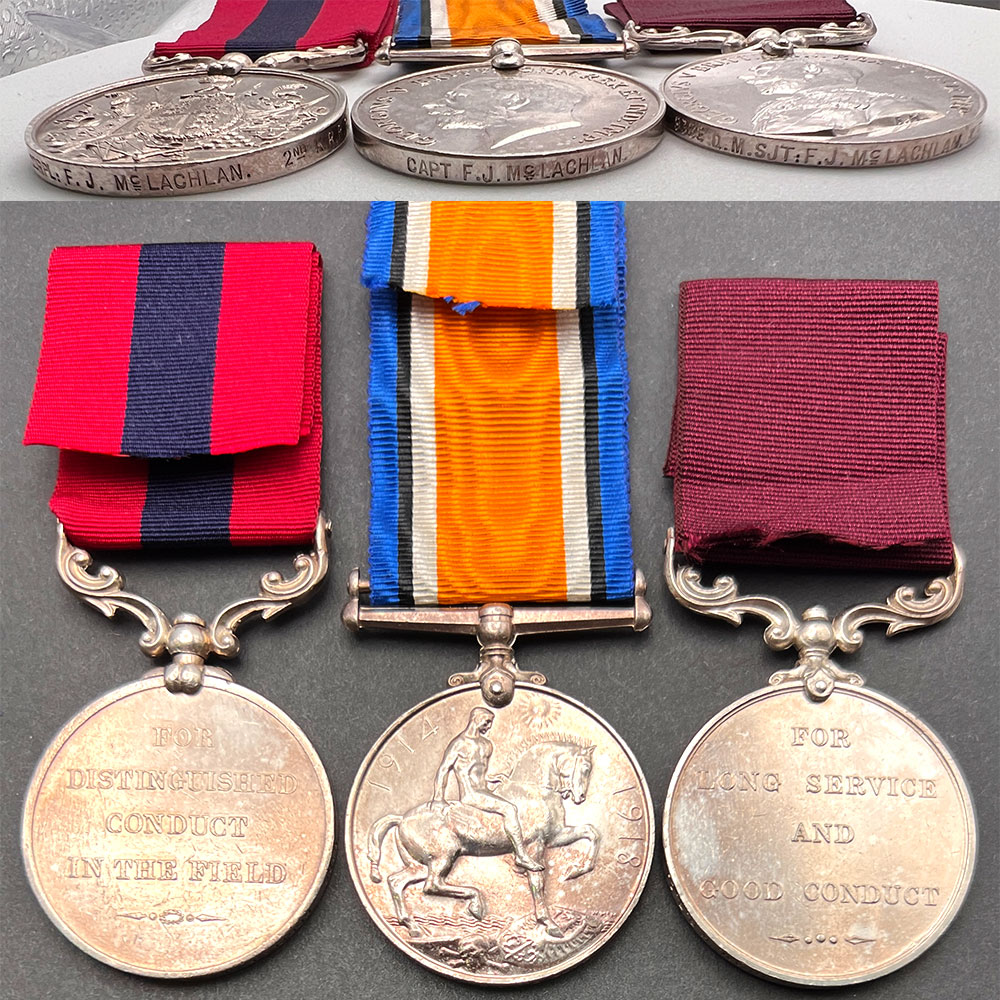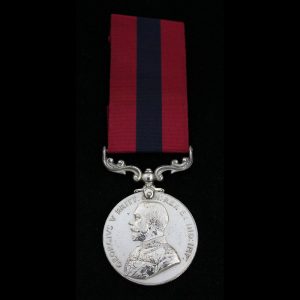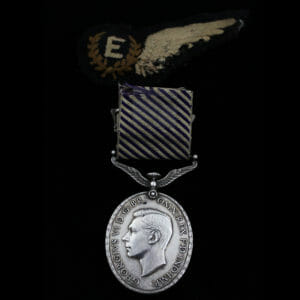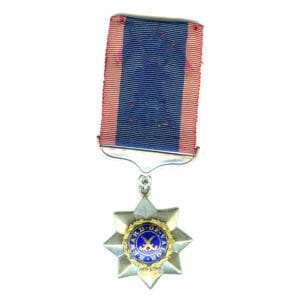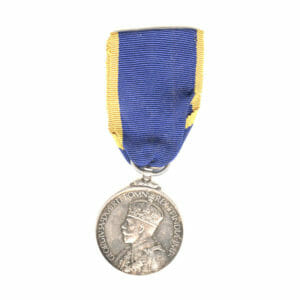Description
Distinguished Conduct Medal, VR, British War Medal, Army Long Service and Good Conduct Medal GV, Captain Frederick James McLachlan, King’s Royal Rifle Corps, confirmed award of the DCM for the Siege of Ladysmith.
DCM officially impressed: “9386 Corpl: F.J. McLachlan. 2nd K.R.R.C.”
BWM officially impressed: “CAPT F.J. McLACHLAN”
Army LSGC Officially impressed: “9386 Q.M. Sjt: F.J. McLachlan. K.R.R.C.”
With a digital copy of his extremely detailed Officer’s Service file including all his previous service before his commission, about 120+ pages long.
“Amongst other recipients of this honour were:- Sgt Major T. Maple, Sergt G. Hoad, Sergt A.E. Green, and No 9386 Sergeant F. McLachlan.
These medals had been earned in South Africa during the Siege of Ladysmith” – King’s Royal Rifle Corps Chronicle 1904.
Rifle corps chronicle 1902: “REGIMENTAL RECORDS, 2nd Bn K.R.R.C. – 19th October:- The Following Officer and N.C. Officers were honoured by his Majesty the King for Distinguished Conduct in the Field:- Captain A.J. Lainson D.S.O.; Color-Sergeant T. Maple, Sergeant G. Hoad, Corporal A.e. Green and Corporal F. McLachlan, Distinguished Conduct Medal.”
Frederick James McLachlan was born in
The son of Private Frederick Augustus McLachlan, Royal Highlanders and Barabara McLachlan.
His brief service:
Enlisted into the KRRC on 22nd Feb 1896
Promoted Sergeant, 19th July 1900
Mentioned in Despatches, London Gazette 8th February 1901
Awarded the Distinguished Conduct Medal, London Gazette 27th Sept 1901
Promoted Colour Sergeant, 15th March 1905
Promoted Quartermaster Sergeant, 25th March 1911
Appointed to a Commission as 2nd Lieutenant, for service in the Field, and posted to the K.R.R.C., 20th December 1914.
Arrived with his unit the 1st KRRC on 1st January 1915, and was wounded and invalided in record time in less than a week.
Serving in France with the 1st Battalion K.R.R.C he was Wounded by Gun Shot on 6th January 1915 according to the war diary:
“2nd Lieut McLachlan who had gone out to visit an advanced post of B Company in an old disused Trench was wounded in the foot.”
He left his unit on 7th January 1915, to return home to Dover on the Hospital Ship St David for 1 month of recovery.
A letter regarding his recovery dated 4th Feb 1915 from him reads:
“It was not till the 24th ultimo that I was able to walk with any aid, the nature of my wound being a bullet wound in the foot, and at the present times I find there is a slight limp and am unable to walk more than 3 miles. This inability will I hope wear off, but in view of being unable to return to my unit for duty I beg to request that I appear before a board of medical officers.”
Promoted to Lieutenant, 30th April 1916
Appointed as Adjutant (Special Reserve), 30th April 1916
Appointed Acting Captain whilst holding appointment as Adjutant, 3rd August 1917
Promoted Captain, 11th October 1917
Relinquished Appointment as Adjutant 11th October 1917.
Seconded for duty as an Assistant Instructor, Army Infantry School, 14th April 1918 to 29th May 1918.
Placed on Half Pay List on account of ill health contracted on active service, 18th June 1919.
Award of his DCM from the KRRC Chronicle, and some grant events featuring over 100 Elephants during the 1903 Delhi Durbar:
“On the 29th of December, 1902, at twelve noon, the round of functions is set a rolling with a royal salute of thirty-one guns, denoting the arrival of Their Royal Highnesses, the Duke and Duchess of Connaught, at the railway station, followed in a few minutes by another salute of thirty-one guns, and we know that His Excellency, the Viceroy, has also come. The troops, who have been lining the streets and waiting for some time, look up and wish it was all over.
In places, stands have been built from which spectators may view the state entry, and these are filled with Europeans and minor chiefs who are not taking part in the elephant procession. Where there are no stands, spectators are few and far between. At last, a policeman rides slowly by, heading the procession; next, a battery of artillery and a regiment of cavalry, part of the Viceroy’s escort. Then comes into view the first of the elephants, two and two they pace slowly down the street, the first six are carrying aides-de-camps.
Then “present arms” rings out, and the Viceroy with Lady Curzon come by on a magnificent elephant, which was said to have performed the same duty for Lord Lytton in 1877. Immediately behind are Their Royal Highnesses the Duke and Duchess of Connaught; and now pass by no less than 120 elephants, two and two, carrying all the big native chiefs and their retinues. It was a fine sight, but the pick of the whole lot were the Imperial Cadet Corps, all well mounted and magnificent in their white uniform with light blue turbans.
We now settled down waiting for the 1st January and the festivities of all sorts that were to fill up the following eight days.
Two days prior to the state entry, at a full dress rehearsal for the big Inspection Review of all the troops, among other honours distributed by His Excellency the Commander-in-Chief were several medals for distinguished conduct in the field, and among other recipients of this honour were: —No. 1412, Sergeant—Major T. Maple; No. 5644, Sergeant G. Hoad; No. 7768, Sergeant A. E. Green; and No. 9386, Sergeant F. McLachlan. These medals had been earned in South Africa during the siege of Ladysmith.
